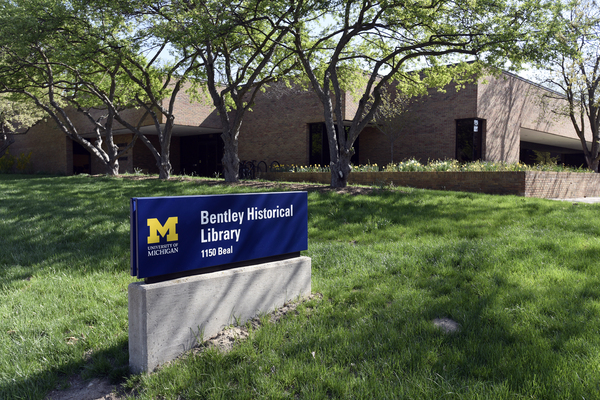Amateur photographer; sixty-two reels of film shot by Benz on various trips.
When the University of Michigan Media Resources Collection was accessioned by the Bentley Historical Library, a number of films were discovered in the vault that were not related to that collection. Within that material were travel films shot by Fred E. Benz. These films document Benz's travels around the world between 1929 and 1950. The films had been edited together and were probably used by Benz for presentation to local groups and as home entertainment.
The Fred E. Benz Collection contains sixty-two, 400 foot reels of silent 16mm film. It is made up of eight series, one for each trip taken. The series are: Africa, Australia/New Zealand, Guatemala, Havana, Mexico, Russia, South America, and a World Cruise. The contents of each reel are described in the finding aid. Benz has included handwritten descriptions of the images found on the Russian and World Cruise series attached to the inside lids of each can of film. Benz was careful to document most of the locations with a handwritten note displayed before the camera. When cities or natural markers are noted in the finding aid, the identifying information was taken from that supplied by the film maker on the screen or from his notes in the can lids. The spelling of geographic locations in the finding aid reflect the information on the film and not current spellings.
Short notes found with the Mexican footage indicate it was the result of two different trips. The reels retain their original numbering because the numbered reels (1,2,3,4) appear to comprise one trip and numbered/lettered reels (1a, 3a, 4a) comprise the second trip.
The value of the collection is that it captures moments in time, documenting lifestyles, architecture and modes of travel which no longer exist or have evolved over time. Footage exists of London on the eve of war and Shanghai one year before being destroyed by the Japanese invasion.
Perhaps the greater value lies in the depiction of the indigenous lifestyles captured on film. Benz, as an amateur photographer, was interested in the common events that he experienced as he traveled. The collection features extensive recordings of people working or playing, and children of different cultures going about their daily activities. The films show barren huts in remote areas of Russia in the 1930s, families living under stone bridges outside of Buenos Aires, life-saving competitions in Sydney and the plethora of street markets found in most cultures and countries that he traveled through.
Because these are travel films, the scope of the footage included often extends beyond the geographic area used to identify the series. For example, the Australia footage includes material filmed on various Pacific islands, the Asian continent and Japan. The Russian trip contains footage of England and Northern Europe, and the South American films contain shots of the departure from New York. Each series should be examined for additional geographic content.
Special attention should be given to the Mexican series containing film recordings of Mt. Rushmore with construction only partially complete. Included as well are extensive shots of bullfighting in addition to other Mexican scenes. Also of note is the extensive depiction of women throughout all of the series. On the canister containing reel 5 in the Russia series is a receipt from United States Navy Department stating that this reel was being forwarded to Chicago for study of the shots of Kirkenes, Norway.
The color in the Africa, Guatemala, Havana, Mexico and South America series is excellent. The wide, clean, lush cityscapes of Havana and Capetown are richly captured in color and give an indication why they were popular travel destinations at this time.
In addition to the eight travel series, the collection also included one reel of World War II footage assembled by Castle Films from public domain footage. This type of film was sold through camera stores and mail order houses and Benz probably purchased a reel for his own use. The identifying writing on the film can is in Benz's handwriting and clearly belonged with his collection.
